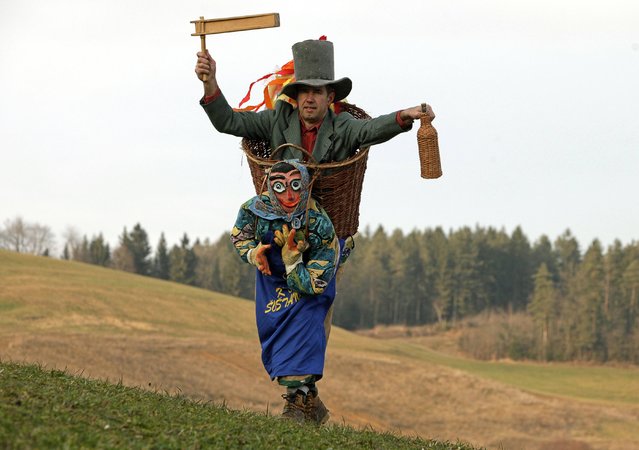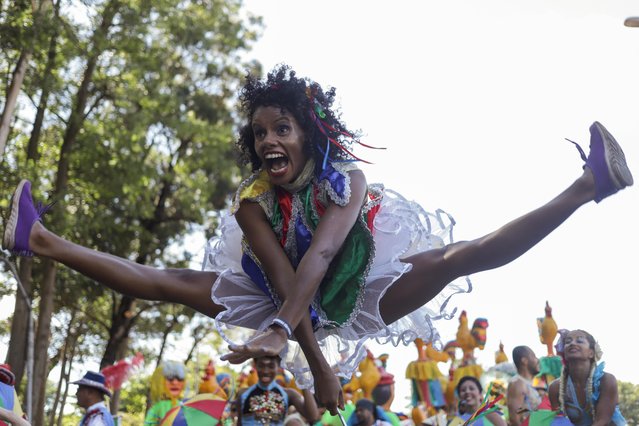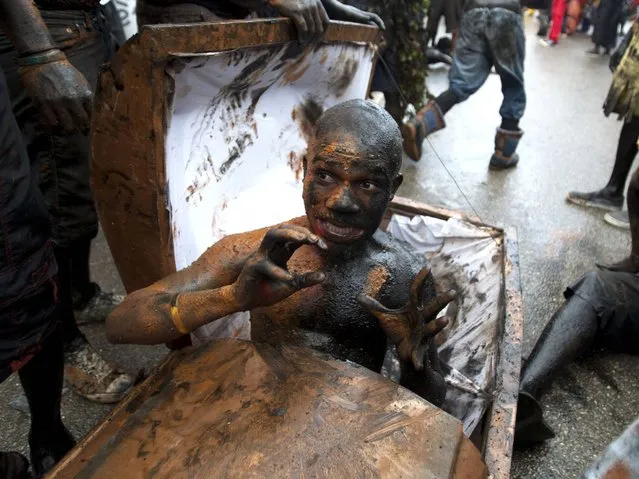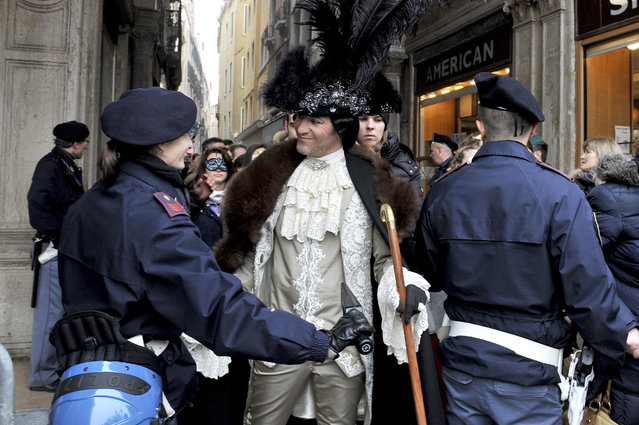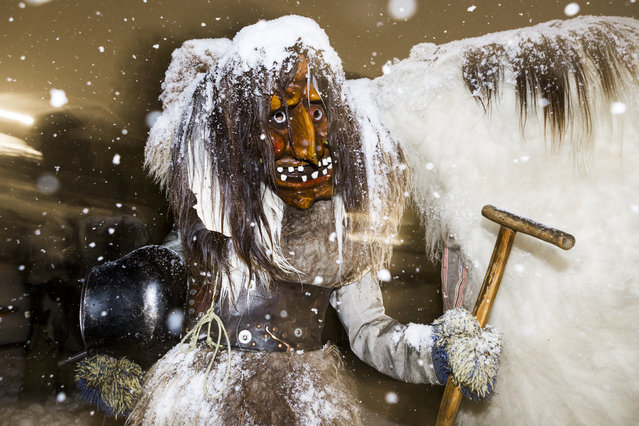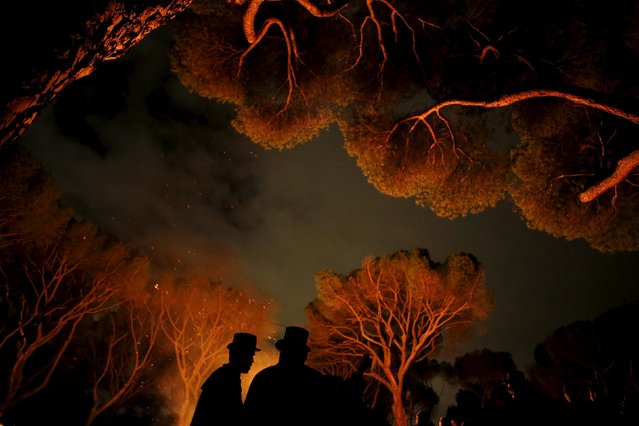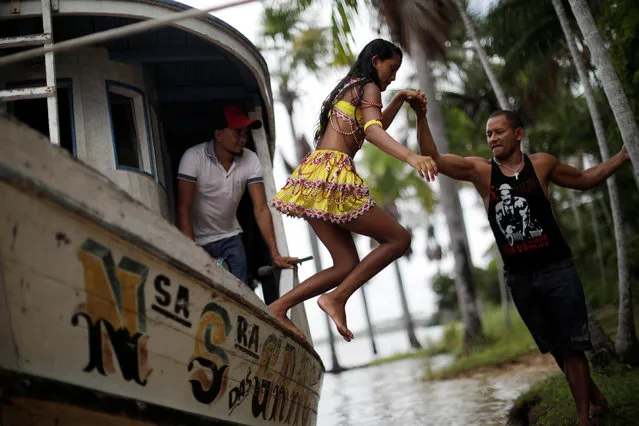
A member of the “Bloco Ultima Hora” group gets off a boat during Carnival of the Waters, where costumed and colorful boats navigate the river Tentem, around the islands near the city of Cameta, Brazil on February 8, 2018. (Photo by Ueslei Marcelino/Reuters)
14 Feb 2018 00:02:00,post received
0 comments

